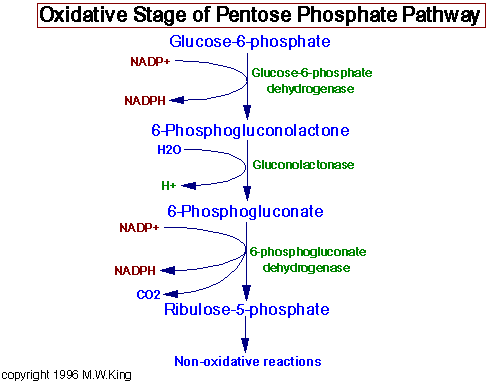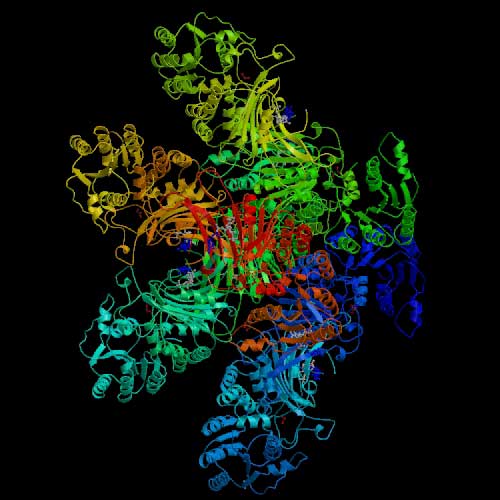
This enzyme is of clinical importance because the NADPH produced by G6PD is essential for the integrity of red blood cell membranes. G6PD deficiency is one of the most common enzymopathies in the world affecting 400 million people. It is inherited as a sex-linked trait. Red blood cells are affected because they lack mitochondria and hence have no other means of generating NADPH. The major role of NADPH in red blood cells is to reduce glutathione which is essential for maintaining the normal structure of red blood cells. Deficiency results in the breakdown of red blood cells when exposed to certain drugs or the stress of infection. The incidence of glucose 6-phosphate dehydrogenase is 11% among African Americans. This suggests an advantage for the deficiency under certain conditions. G6PD does protect against malaria, accounting for the high incidence among this population. Click here for a tour of G6PD
|
|

MThe reactions of the pentose phosphate pathway have two major purposes. The first is generation of NADPH for reductive biosynthesis, the second is formation of ribulose 5-phosphate for nucleotide synthesis. In the non-oxidative reactions 2 NADPH are produced in the conversion of glucose 6-phosphate to ribulose 5-phosphate. The dehydrogenation reaction catalyzed by glucose 6-phosphate dehydrogenase is the committed step in this pathway. The high preference for NADP+ over NAD+ by glucose 6-phosphate dehydrogenase allows reductive biosyntheses and glycolysis to occur simultaneouly at a high rate.
